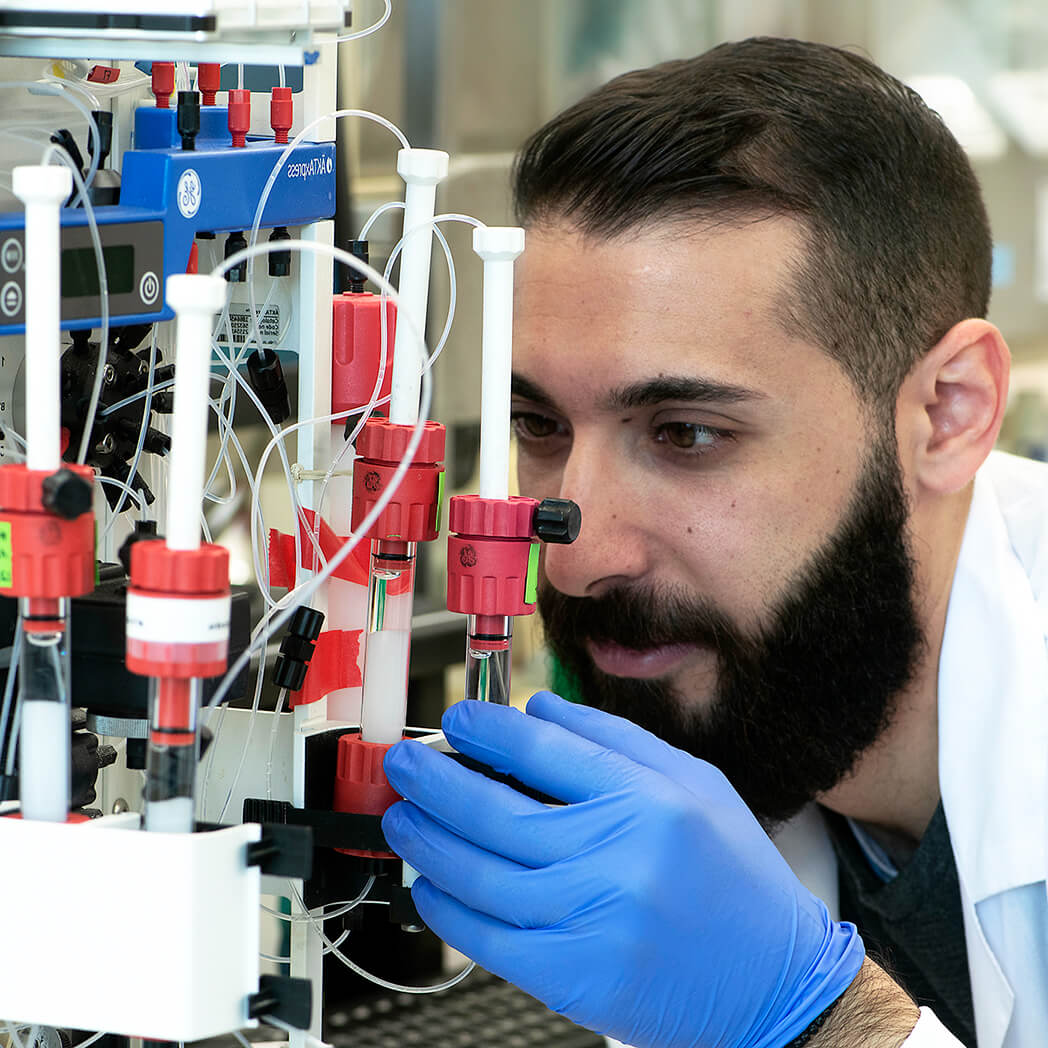Overview
Cat #:
STH-600-FRN
Alternative Name Delta-theraphotoxin-Hm1a, Delta-TRTX-Hm1a, Heteroscodratoxin-1, HmTx1, Kappa-theraphotoxin-Hm1a, Kappa-TRTX-Hm1a
Lyophilized Powder yes
Origin Heteroscodra maculata (Togo starburst tarantula) (Togo starburst baboon spider)
Source Synthetic modified peptide
MW: 4625 Da
Form Lyophilized from double distilled water (ddH2O). May contain TFA as a residual counter ion.
Effective concentration 100 nM - 1µM
Sequence ECRYLFGGCSSTSDCCKHLSCRSDWKYCAWDGTFS-OH
Modifications ATTO 647N (conjugated via amine group)
Label ATTO-647N. ATTO dyes are characterized by strong absorption (high extinction coefficient), high fluorescence quantum yield, and high photo-stability. Maximum absorption 646 nm; maximum fluorescence 664 nm. The fluorescence is excited most efficiently in the range 625 - 660 nm. A suitable excitation source is the 647 nm line of the Krypton-Ion laser or a diode-laser emitting at 650 nm. It can be used in flow cytometry (FACS) using the red (637 nm) laser. The extent of labeling is one molecule of dye per one Hm1a molecule.
Activity Hm1a is a NaV1.1 specific activator1.
Shipping and storage The product is shipped as a lyophilized powder at room temperature. Upon receipt, store the product at -20°C. Protect from moisture. Avoid exposure to light.
Solubility Centrifuge the vial before adding solvent (10,000 x g for 5 minutes) to spin down all the powder to the bottom of the vial. The lyophilized product may be difficult to visualize. Add solvent directly to the centrifuged vial. Tap the vial to aid in dissolving the lyophilized product. Tilt and gently roll the liquid over the walls of the vial. Avoid vigorous vortexing. Light vortexing for up to 3 seconds is acceptable if needed.
The product is lyophilized in 0.5 ml conical vial.
The product is soluble in pure water to high-micromolar concentrations (5 µM - 1 mM). For long-term storage in solution, we recommend preparing a stock solution by dissolving the product in double distilled water (ddH2O) at a concentration between 100-1000x of the final working concentration. Divide the stock solution into small aliquots and store at -20°C. Before use, thaw the relevant vial(s) and dilute to the desired working concentration in your working buffer.
Centrifuge all product preparations before use. It is recommended to prepare fresh solutions in working buffers just before use. Avoid multiple freeze-thaw cycles to maintain biological activity. Avoid exposure to light.
Storage of solutions Store the reconstituted solution at -20°C for the shortest time possible. Avoid multiple freeze-thaw cycles. We do not recommend storing the product in working solutions for longer than a day. Avoid exposure to light.
Scientific background Delta-theraphotoxin-Hm1a (Hm1a) is a peptide toxin originally isolated from Heteroscodra maculate tarantula venom. Initially described as a moderate-affinity KV4.1 blocker¹, later studies confirmed it primarily targets NaV1.1 voltage-gated sodium channels²,3. It interacts with extracellular loops connecting transmembrane segments 1-2 and 3-4 in domain IV voltage sensor of the channel to inhibit NaV1.1 fast inactivation2,3. Hm1a inhibits human NaV1.1 channel inactivation expressed in Xenopus oocytes with EC50 value of 38 ± 6 nM.
Recent studies show Hm1a restores interneuron firing in Scn1a+/- mice, improving inhibition in Dravet Syndrome models⁴. Electrophysiology confirms it prolongs NaV1.1 activation with minimal effects on NaV1.2 and Na1.6⁵,⁶.
NaV1.1 channel is a therapeutic target for brain disorders, such as epilepsy, Alzheimer's disease, and autism. It also contributes to mechanical pain by regulating excitability in a specific subset of sensory neurons within the peripheral nervous system. Hm1a is a valuable tool for neuroscience and pharmacology research⁴-⁷.
Target NaV1.1, KV2, KV4 channels
Lyophilized Powder
For research purposes only, not for human use
Last Update: 27/02/2025

